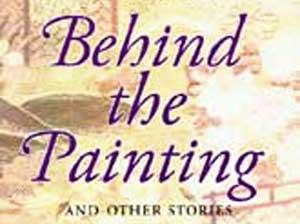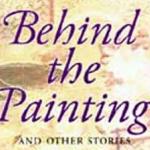Behind the Painting, Behind the Smile
* * * * *
Review of Siburapha's Behind the Painting and Other Stories, Silkworm Books, 2000.
* * * * *
Visitors to Thailand repeatedly mention that Thai people seldom betray any emotion save a kind of bubbly joy. As William James once wryly and enviously remarked about some people, they seem to have been born with two bottles of champagne in their bloodstreams. This is fairly accurate, and it partially explains why so many visitors return. But, needless to say, Thais are nonetheless human beings, and they feel the same range of emotions with which all humans are blessed and burdened. The difference is that Thais skillfully keep those emotions bottled up, because betraying antisocial emotions causes a loss of face and threatens their generally stable social order.
Behind the Painting is the apt title of a Thai novel dealing with romantic love in the context of duty and face. Apt, because the 'painting' is like the Thailand that visitors see. Behind it is a reality sometimes less than cheery. I once suggested to a Thai that I would like to be Thai for a day, just to know how I would feel. "You would feel numb," she said flatly. Not the answer one would expect from an inhabitant of the Land of Smiles.
Nopphon is a Thai student studying in Japan just after the end of absolute monarchy in Thailand. Chao Khun and his new wife Kirati pay Nopphon a prolonged visit. Being somewhat advanced in years, Chao Khun permits his wife to share Nopphon's company. They become intimate friends. But it being impossible, as some have argued, for a man and woman to be just friends, Nopphon falls for her and declares his love. This despite his betrothal to a woman back in Thailand, a fact he does not share with Kirati. Still, Kirati does not reciprocate, and even scolds Nopphon for being unable to contain his emotions. Husband and wife return to Thailand, Nopphon despairs, years pass, letters are exchanged. Then Chao Khun dies, Kirati becomes eligible again, and, after some time, Nopphon returns. Among others waiting at the dock to meet him are Kirati and his fiancee, creating a situation technically known as Uh-oh.
To say any more would spoil the story, but a close reader bearing in mind my analysis of Thai social life could probably figure out the rest. The moral of the story, if any, is that Nopphon broke the rules by expressing his true emotions. This brought misery in its train comparable to the misery he felt in keeping silent. The idea is that emotion, like energy, is conserved. Freud would say, "Get it out." Thai psychology says, "Keep it in."
Praise is due the English translator David Smyth for rendering this melancholy story in a melancholy way, in a style reminiscent of Hemingway, King of Melancholy. Consider: "We walked around admiring the scenery and looking at the shops for a while and then stopped at one for a rest and a drink." Or: "I'd like to go to Nikko and see the waterfalls and the moonlight shining on the mountains. I'd like to go to a seaside district, too, and watch the boys and girls swimming together along the beach...." Don DeLillo once said that the key to the Hemingway style is the word "and." (Sonorous but obscure place names like "Nikko" are important too.)
A number of film versions of Beyond the Painting have been made. In a recent version directed by Cherd Songsri, the delicacy and self-control of the actors is almost surreal. They seem to be soft-spoken machines and not people, and the knowledge that they are people, and that they are suffering behind their smiles, is excruciating. In a good way.
A truism: the best, most candid portrayals of a society are often written by exiles of that society. Siburapha, pen name of Kulap Saipradit (1905-1974), is another example. A suspected Communist, he was arrested in 1952 for distributing humanitarian aid to victims of flooding in Thailand's poor, flood-prone northeast. The government deemed this subversive. He spent over four years in prison. Later, he was visiting China when he learned that right-wing leader Sarit had seized power back home. Siburapha did not return, and his last 16 years were spent in exile.
Behind the Painting is a departure from Siburapha's other, more "socially committed" writings. Three such are included in the present collection, and each tries to demonstrate that Thai society is unjust and that the proletarian revolution is at hand. That Thai society remains unjust, or at any rate unequal, is obvious. For every penniless drunkard stumbling toward a brothel, there is a sober millionaire steering his BMW to the beach house. But the proletarian revolution being improbable at best, there is something sad about Siburapha's ill-fated attempts to rouse the rabble.
When an artist becomes politicized, the transition is not always for the better. An artist creates timeless beauty; a reformist destroys immediate ugliness. Behind the Painting is transitional. While the novel's characters are drawn from the Thai upper classes and the novel's topics are love and marriage, politics creep in here and there. Siburapha addresses the question whether Thais educated abroad (like Siburapha himself) are obligated to return home and serve their country. Nopphon thinks so. Kirati concurs. No more is said. But in the later, bitter story "Those Kind of People," the transition to politics and disillusionment is complete. The story's young protagonist "pointed out to her father that hundreds of Thais had gone to study in America and England, but that she could not see that there had been any change or improvement in the lives of the majority of people." Perhaps Siburapha had a touch of the Smart Man's Burden. At least one Thai writer has suggested that Behind the Painting is actually a political allegory. Young, up-and-coming, deceitful, impetuous Nopphon, who wants to be a banker, represents the capitalists. The older, fading, honest, reserved Kirati, whose father was a prince, represents the aristocracy. This interpretation is compelling, but whether Siburapha intended it is unknown.
In any case, of the handful of Thai novels I have read Behind the Painting is the best. Like a good Chinese watercolor, it captures almost too much of life in just a few practiced brushstrokes; and it provides a haunting, but indelible image of the inner life of the Thais, whose outer life is so enchanting and seemingly carefree.
* * * * *
 ThingsAsian
ThingsAsian

















